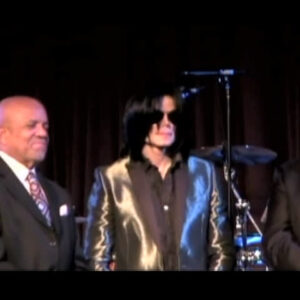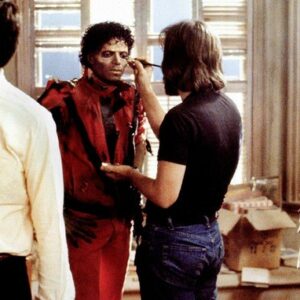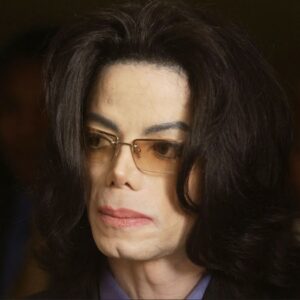When we talk about icons in cinema, Bruce Willis and Quentin Tarantino stand out as defining forces of their respective fields. Willis, with his hard-boiled charm and knack for gripping action, became a beloved action star in the late ’80s and early ’90s. Tarantino, on the other hand, emerged as a visionary director whose unfiltered creativity and obsession with the unconventional rewired the circuitry of modern cinema. In an era when Hollywood was reeling from the clash of blockbuster formulas and budding indie cinema, their paths crossed to give us an unexpected yet unforgettable collaboration in Pulp Fiction (1994). This wasn’t just a film; it was a seismic shift in film history, challenging norms and merging genres. Together, Willis and Tarantino crafted a blend of gritty realism and pulp-inspired storytelling that showcased the extraordinary synergy between an action star and a directorial provocateur. Their collaboration redefined both of their careers, left an indelible mark on pop culture, and remains a golden standard of artistic partnership.
1. Setting the Stage for an Iconic Team-Up
As the 1990s rolled in, Quentin Tarantino was still relatively unknown, yet he was carving a niche with his raw and audacious storytelling. Tarantino’s 1992 debut, Reservoir Dogs, created a buzz in independent cinema circles. Its gritty tone and sharp, unfiltered dialogue reflected a cinematic voice that was hungry to break from the mainstream. Meanwhile, Bruce Willis was already a towering figure in Hollywood. Known for his roles in films like Die Hard, The Last Boy Scout, and Striking Distance, Willis embodied the tough, stoic, and somewhat reluctant hero. He was loved by audiences worldwide for his ability to navigate action-packed plots with a nonchalant charm that made his characters feel both relatable and larger than life.
Yet, despite his stardom, Willis was often pigeonholed into the role of the everyman hero caught in extreme situations. His characters frequently faced a clear enemy and high-stakes physical challenges, while his wit and vulnerability simmered below the surface. Tarantino, on the other hand, offered something different. Known for his deeply layered characters and twist-laden plots, Tarantino saw in Willis the potential to break out of his action-star mold. He envisioned Willis as Butch Coolidge, a boxer on the run, whose motivations were shaped by personal morality, loyalty, and a drive for survival. By bringing their talents together, Tarantino and Willis effectively bridged genres, giving audiences an unprecedented fusion of indie grit and mainstream appeal.
2. The Impact of Pulp Fiction on Both Careers
In Pulp Fiction, Bruce Willis took on the role of Butch Coolidge, a weathered prizefighter who defies a mob boss’s orders in order to stay true to himself. This wasn’t the usual hero-versus-villain role for Willis; Butch was morally ambiguous, torn between a sense of survival and a code of ethics. It allowed Willis to showcase a different kind of performance: raw, understated, and dripping with vulnerability. Audiences were introduced to a version of Willis that was darker, subtler, and far more introspective than his previous roles. This transformation revealed layers to Willis’s talent that few directors had tapped into before. He wasn’t just the all-American hero anymore; he was a man flawed and fractured, fighting to survive in a world gone mad.
Tarantino’s direction played a huge role in unlocking this new side of Willis. His characters were intricately layered, and his dialogues operated on multiple levels of meaning. Every line of Butch’s felt weighty, each decision impactful. Tarantino used Pulp Fiction to present Willis as an actor who could deliver nuanced, reflective performances that lingered long after the credits rolled. This not only showcased Willis’s versatility but also challenged him to dive deeper into his character than ever before. The collaborative synergy between the actor and director produced something remarkable—a performance that felt both thrillingly new and authentically raw.
3. A Defining Moment for Independent Cinema
The collaboration of Bruce Willis and Quentin Tarantino in Pulp Fiction became more than just a pairing of big-name talent; it marked a turning point in independent cinema. Pulp Fiction was a massive success both critically and commercially, and it solidified Tarantino’s place as a creative force in the industry. But it wasn’t only Tarantino’s career that saw a turning point. Willis’s decision to work on an indie project, rather than a typical Hollywood action film, helped catapult the notion that independent films could have mainstream appeal and that established stars could successfully transition to the indie world.
The success of Pulp Fiction showed that independent films could break through the noise of big-budget blockbusters and resonate with audiences in a unique way. This paved the way for countless other indie filmmakers who wanted to push boundaries and experiment with different storytelling styles. Tarantino became a household name, not only because of his cinematic style but also because he offered an alternative to the predictable Hollywood formula. The impact was also seen in Willis’s career as he took on more experimental roles in films like Twelve Monkeys and The Fifth Element. Pulp Fiction redefined what both Tarantino and Willis could bring to the screen, creating a ripple effect that inspired a generation of actors and filmmakers to take artistic risks.
4. Legacy and Influence on Future Generations
The influence of the Willis-Tarantino collaboration extends far beyond their individual careers; it reshaped how audiences and actors alike viewed independent films. This partnership proved that actors could, and should, break out of the constraints of genre and challenge themselves with new kinds of characters and stories. Willis’s transformation in Pulp Fiction inspired countless actors to explore independent cinema, leading to a surge of high-profile talent gracing indie films in the years that followed.
Pulp Fiction’s cultural impact is undeniable, with its dialogue, style, and memorable scenes imprinted in the minds of audiences worldwide. The scene where Butch Coolidge faces a moral decision in a pawn shop is now iconic, representing the depths of Willis’s character and Tarantino’s storytelling style. Memorable lines like “Zed’s dead, baby” and the unforgettable scene with the gold watch have transcended the screen, permeating pop culture and becoming part of the cinematic lexicon. The collaboration inspired a new generation of filmmakers to incorporate unconventional storytelling, nonlinear narratives, and genre-blending into their own work. It demonstrated that taking risks could yield rich, enduring rewards.
5. Why the Willis-Tarantino Collaboration Remains Iconic
To this day, the collaboration between Bruce Willis and Quentin Tarantino in Pulp Fiction remains a landmark moment in film history. It represents the power of two distinct artistic visions coming together to create something unforgettable. Tarantino’s willingness to reimagine what an action star like Willis could achieve on screen, combined with Willis’s own courage to dive into the indie world, birthed a cultural phenomenon. It challenged Hollywood’s conventions, proving that risk-taking could result in legendary storytelling that stands the test of time.
This collaboration continues to be celebrated because it underscores the potential of collaboration in cinema, where actors and directors push each other to explore uncharted creative territories. By daring to challenge the boundaries of their own established identities, Willis and Tarantino opened the doors to a new cinematic language that has inspired countless films, actors, and directors. Even decades later, Pulp Fiction remains not only a masterpiece of storytelling but a testament to what can happen when two iconic forces unite, leaving behind a legacy that is as thrilling, intense, and timeless as the film itself.





